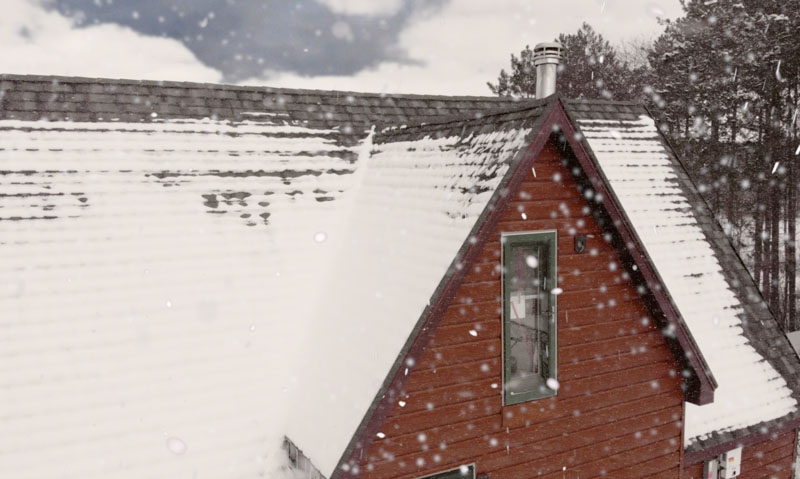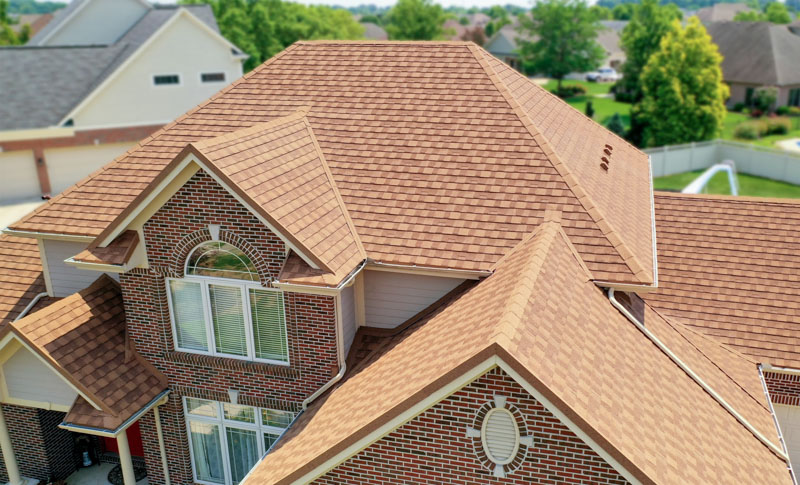The slope, pitch, or angle, of a roof is part of the architecture of the house, which adds to the look and feel of your home. It relates to the measurement of the roof’s vertical rise to horizontal distance — in other words, the degree to which your roof is angled — which can be anywhere from flat to steep.
Just as all roofs aren’t the same, neither is the slope or pitch of those roofs. The slope varies, depending on the type of roofing material used, and may vary at different spots on the same roof due to the overall design of the home.
Additionally, there’s a minimum slope for a metal roof and other types of roofing. In this post, we’ll provide an overview of roof slope, why it matters, and the minimum slope for a metal roof.

In This Article
What is Roof Slope?
Understanding roof pitch requires referring to the slope as a ratio: 2:12, 4:12, and 6:12. These numbers mean the roof slopes 2 inches for every 12 inches, 4 inches to every 12 inches, 6 inches to every 12 inches, etc. The lower the first number, the more shallow the roof pitch.
The slope of a metal roof is an important consideration when you’re looking to update your residential roof to metal shingles. Knowing the minimum slope for a metal roof is necessary to ensure the roof adequately protects your home.
The slope is designed to help water or debris run off your house so it doesn’t pool or gather on the roof, causing long-term damage.
Common Roof Slope or Pitch
The most common roof pitch is what you see atop traditional homes, which is considered moderate, but roof slopes can range from flat to steep. Flat roofs are often seen with commercial buildings but are not uncommon with more modern architecture. Roofs are considered flat when the pitch measures 2:12 or less.

The average roof pitch measures somewhere between 4:12 and 9:12, which is considered a moderate slope. This ratio range is frequently seen with asphalt shingle roofing. Anything below 4:12 is considered a low slope, and anything above 9:12 is considered steep.
Why is the Slope of a Metal Roof Important?
The slope, or pitch, of a metal roof is important since it plays a vital role in redirecting excess water off your roof. Over time, flat and low-sloped roofs may require more maintenance and repair to prevent water damage and roof leaks. The steeper the roof, the more effective the drainage.
Another reason to know the slope of your roof is cost. The roof slope may affect the cost of a new roof due to safety and labor. A steep roof can cause safety issues for professional workers, which can increase the amount of labor involved.
What is the Minimum Slope for a Metal Roof?
Different types of metal roofing materials and styles can be used with various pitches. Because a number of factors, including the roofing materials, come into play when a home is built, the roof’s slope is specific to that particular house.
Although there is no perfect pitch for a home, there is a minimum slope for a metal roof to ensure the roof effectively diverts water off the house.
Technically, a standing seam metal roof could have a slope as low as 1:12 or less, while corrugated metal roofs are frequently seen with low slope ratios of 3:12 or less. But as mentioned before, a moderate to steep slope is more effective at redirecting water runoff.
Stone-coated metal roofing is designed to mimic the look of asphalt shingles. Large steel panels are stamped into shingles that are then coated with crushed stone.
Given that this type of metal roofing is crafted into shingles, tiles, or wood shake, the ideal slope for stone-coated shingles is moderate to steep (i.e., with a ratio of between 4:12 and 9:12).
Ensure Proper Metal Roof Slope & Installation with Erie Home
The minimum slope for a metal roof is important, but it’s a detail most homeowners would rather not have to deal with. With professional metal roof installation from Erie Home, you can leave those details to the experts. Plus, our metal roofs are backed by a 50-year limited lifetime transferable warranty, so there’s even less to worry about.
Contact us today at 800-998-8301 to learn more about our metal roofing options or request a free expert consultation and estimate.
Frequently Asked Questions
Is a 1:12 pitch okay for a metal roof?
Metal roofs can feature a low pitch provided the correct materials are used, installed properly, and are suitable to the home. Ideally, metal roofs are outfitted with a moderate pitch for adequate drainage.
What is the minimum pitch for a corrugated metal roof?
The minimum pitch for a corrugated metal roof is 3:12 or 4:12. Though it still features a low slope, the angle is enough to promote water drainage off the roof.
Can you put a metal roof on a low slope?
You can put a metal roof on a low slope, but certain metal roofs — such as stone-coated metal shingles — are better suited for moderate to steep pitches, so water doesn’t stay underneath the shingles from inadequate drainage.
What is a common metal roof pitch?
The average pitch for a metal roof is moderate to steep, or between 4:12 and 9:12. Stone-coated metal shingles require a minimum slope of 4:12 to ensure the roof can properly protect the house and effectively divert water off the house so it doesn’t pool.
What is the lowest allowable roof pitch?
The lowest pitch for a roof depends on the type of roof and materials used. Realistically, a roof pitch can be as low as 0:12 (i.e., completely flat), but certain roofing materials work better on certain pitches.
For instance, asphalt shingles aren’t used on flat roofs because moisture could stay locked in between shingles, leading to erosion, leaks, and mold.
